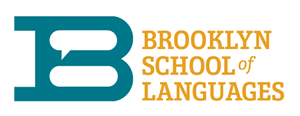Lecture Demonstrations
The Tap Factor customizes in-house lecture demonstrations and facilitations for colleges, universities, academic, and corporate organizations. Participatory tap dance exercises and discussions urge each individual to communicate with their peers using rhythm and dance. This process enriches how one understands their own capacity to approach challenging situations and forge new relationships.
“I love when people come into a lecture demonstration thinking one thing about tap dance and leave thinking another. In each facilitation, I challenge everyone in the room to step out of the comfort zone and learn something new about themselves and each other. My aim is for each group to be left with a heightened sense of their own ability and that of their peers, in that they might approach new challenges with a fresh perspective and open mind.”
Founding Artistic Director - Christopher Erk
The Tap Factor - Columbia Universtity
"Chris joined the Advanced Conflict Resolution class in Fall 2014. There, he was able to showcase to students of the MSc program in negotiation and conflict resolution how to link social capital, arts-based conflict resolution with community building and local peacebuilding by 'tapping' into local resources, individual learning and growth. Through his facilitation, students learned not only about tap dancing but on how rhythm and universally applicable movements can foster dialogue, togetherness and inclusivity - key ingredients of the peace-building domain!"
Adjunct Professor in Conflict Resolution - Columbia University - Pascal da Rocha
"I asked the students to respond to the three questions and post their responses on the board - How do you view tap dance in the world today? How do you feel tap dance can be socially impactful? How do you think you will do handle the process of learning how to tap dance and sharing the experience with your peers? At the end of the class, the initial three questions were asked again. Here we found out how they actually fared in the process. We added new posts to the board to reflect our growth and awareness of how tap dance can be impactful in the world.
I was incredible how the students lit up when they started to lock into the groove and execute the tap steps they were learning. They all looked around at each other wondering if this was really happening!"
Founding Artistic Director - Christopher Erk
The Tap Factor - Brooklyn School of Languages
Director of Studies at the Brooklyn School of Languages, Dennis Chase, contacted the Tap Factor with the idea of integrating a lecture demonstration and workshop with the Tap Factor as part of their 'Broadway' week.
During the hour and a half session, English students from all over the world were introduced to tap dance basics. They began making music with their feet in a matter of moments. This proved to be an excellent mode of communication and discovery.
"Eventually the group moved into a larger space and Christopher arranged them in a circle. Then he put on his tap shoes. Classrooms and offices emptied as the entire school tried to catch a glimpse. After this demonstration, the students were ready to try it on their own. No special equipment, or even rhythm, was necessary. Chris urged each individual to explore his or her own expression through movement and sound. Dance, for him, is a means of communication. For a group of ESL learners living in New York City, this is very relevant."
Director of Studies, Brooklyn School of Languages - Dennis Chase
The Tap Factor - School for International Training
The Tap Factor was invited to facilitate a lecture demonstration and active workshop to a group of college students who were about to journey abroad during their upcoming semester. The goal was to give the students and tap dance experience that would challenge how they approached new situations, spaces, and ways of communication. Over the course of the hour and a half, Founding Artistic Director Christopher Erk gave a slide presentation explaining his interest and experience with tap as well as with the Tap Factor.
He then split the group in two. One group learned the basics tap steps they would later teach to their peers, while those in group two were given tape to map out a workspace within which they would learn.
The two groups worked well together to cover two different areas of responsibility. When they merged, the objective of teaching tap was achieved, while within the parameters set by their peer. The team effort allowed for a unique and productive environment that was representative of those that created it.
Find out how to get the Tap Factor working with your organization!












